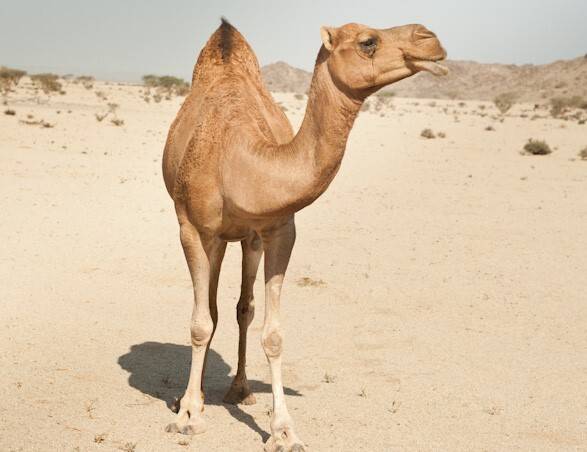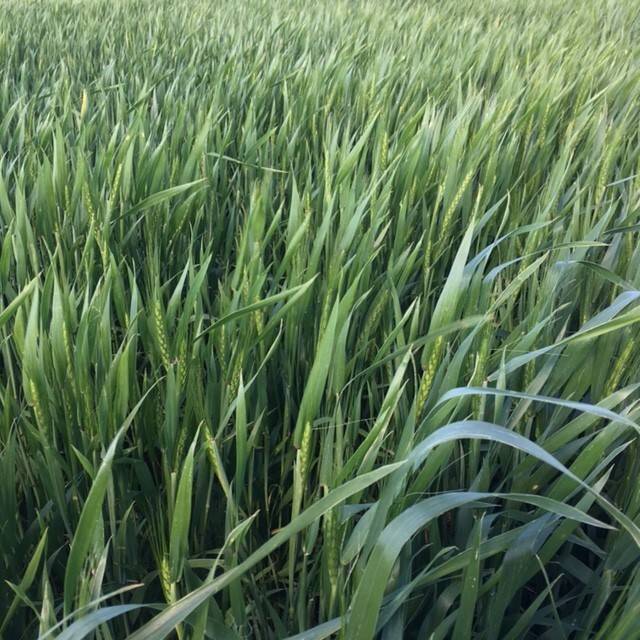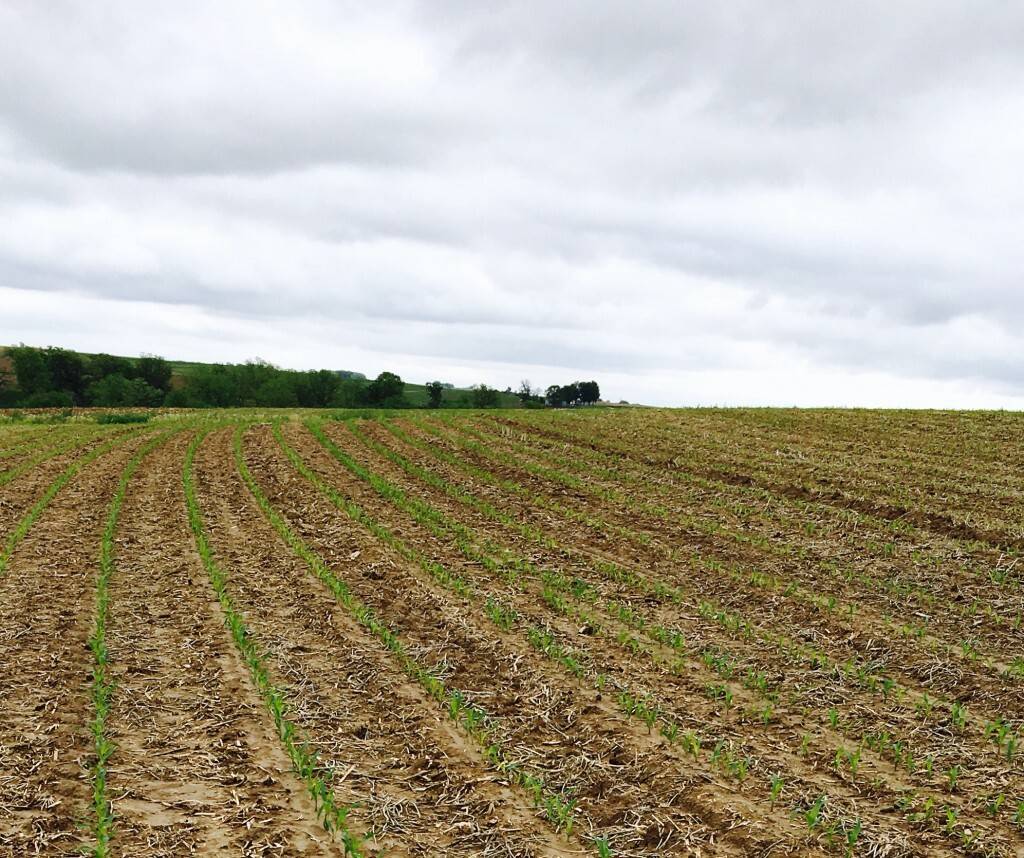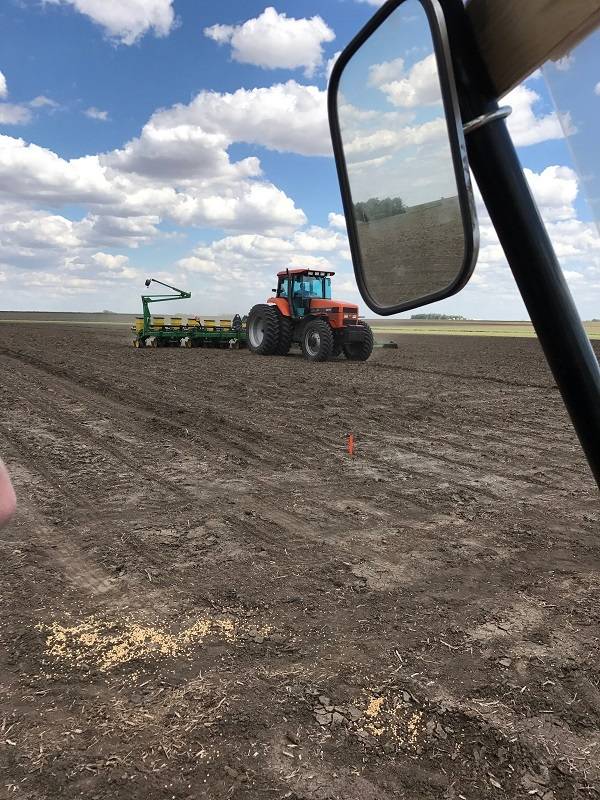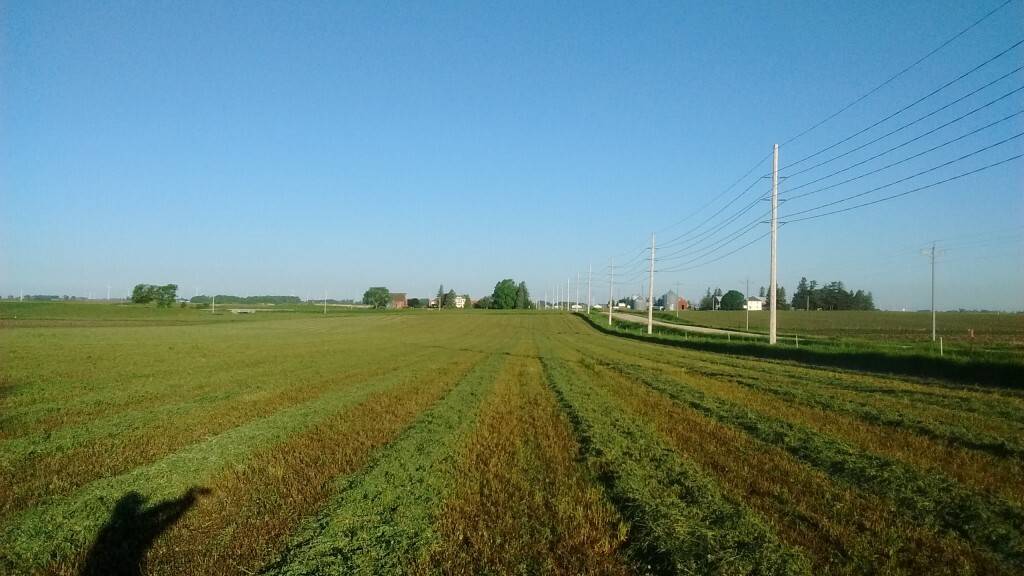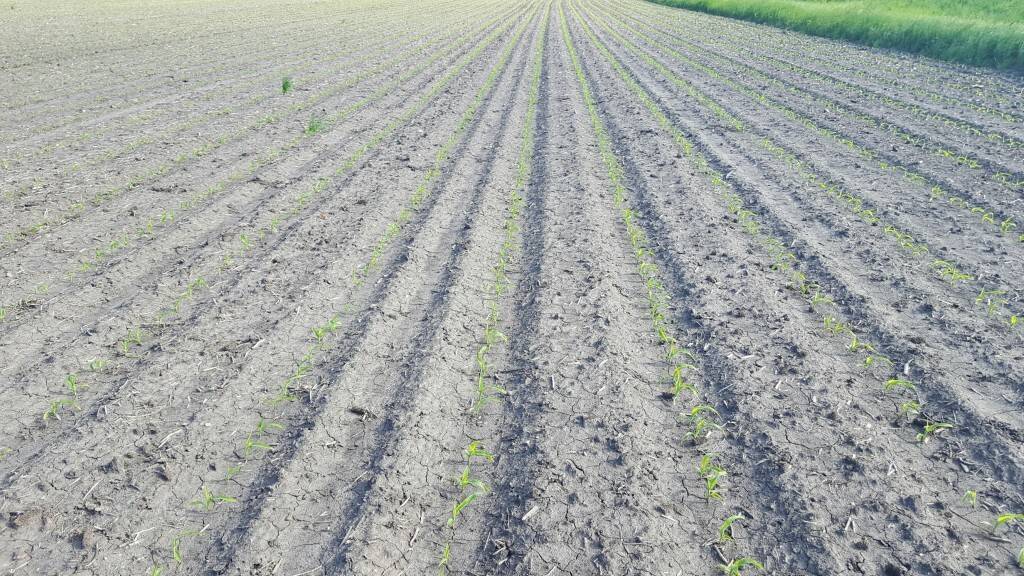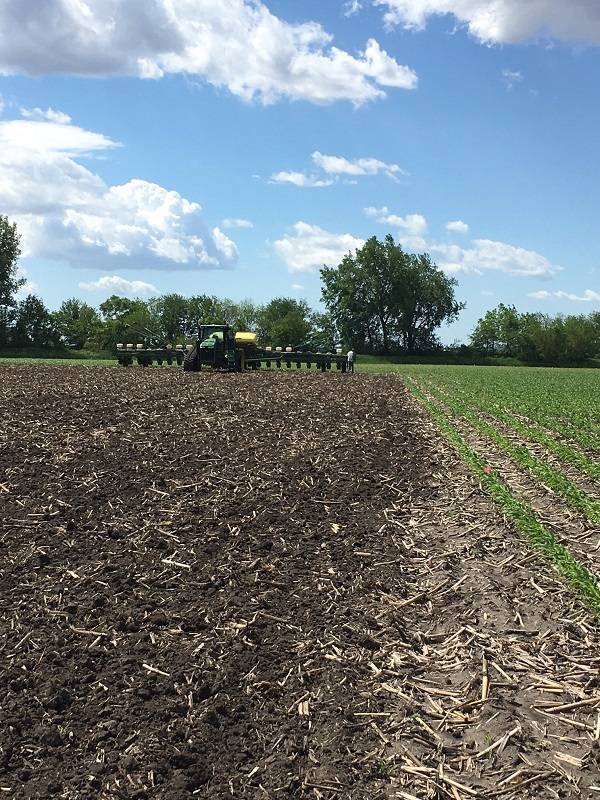Eastern North Dakota
Brain McNamee
Most of North Dakota is starting to look arid as we have gone all spring without moisture. We’ve been chasing the moisture down with seed placement and have hit our limits. The ground has hardened, and soil conditions are growing worse by the day. Later planted corn and tens of thousands of acres of soybeans have been planted into dry soils. With the widespread use of pre-emergence chemicals, there’s potential seedling loss to due chemical activation and plant emergence all at once. We need rain in the worst way and we need it soon!
Northeast South Dakota
James Keltgen
This field of Latham® Hi‑Tech Hybrids at Hermosa is looking great! Due to cooler than average temperatures, heat units are lacking in Northeast South Dakota. Central and North Central parts of the state are extremely dry. Soybeans need moisture to germinate in many areas of the state.
Southeast South Dakota
Ramie Coughlin
After a few days of some much needed rain and warmer weather, the crops are growing vigorously. Wheat is heading, and the first cutting of hay is down.
Northern Minnesota
Ken Highness
It’s been a tough spring! Cold temperatures and rain after planting affected emergence, especially in low areas of the field. The red flags represent poor emergence or no emergence at all. Click here for tips on assessing corn and soybean stands.
Southern Minnesota
Brandon Wendlandt
Yesterday Latham’s regional Technology Showcase Plot was planted near Mountain Lake, Minnesota. This soybean plot features Roundup Ready 2, Roundup Ready Xtend, and Balance GT. Come see them yourself at our plot day on Aug. 22!
Southern Wisconsin
Greg Mair
It’s been another wet week across Wisconsin. While many farmers across the Corn Belt are talking about replants, we’re just praying we can get good enough weather to get the crops in once!
This field of Latham® LH 5335 VT2 PRO was planted April 25. It was in the ground about 18 days before it emerged, but the stand looks great. The forecasted warmer temps should help improve plant health.
Northwest Iowa
Darin Chapman
Brian and Adam Schaffer, Latham Hi‑Tech Seeds dealers in Sheldon, Iowa, are finishing up their soybean plot. There are some concerns of replant following heavy rains and crusting. A small shower and sunshine greatly benefit crops across Northwest Iowa!
North Central Iowa & South Central Minnesota
Cory Greiman
You know what they say, “The time to make hay is when the sun is shining!” Fortunately, it looks like farmers in North Central Iowa are going to catch a break from an especially wet spring in time to bale first cutting.
Southeast Minnesota & Northeast Iowa
Craig Haaland
This field of Latham® LH 5175 VT2 DG RIB DroughtGard® was planted May 5 by Lime Springs, Iowa. This tough hybrid that got hailed on, but it’s starting to turn green after the recent warmer weather. It’s important to keep scouting fields, assessing stands and controlling weeds.
West North Central Iowa
Bart Peterson
Hail and straight line winds on Tuesday, May 16, caused this 200-acre field southwest of West Bend, Iowa, to be replanted. Click here for tips on assessing hail damage.
After digging seed from the ground, I saw hypocotyls and the cotyledons missing. It’s sad to say that more than 50% of the field looked like this.
Eastern Iowa
Jerry Broders
Picket fence stands and uniform emergence begins at the planter. While planting, farmers need to get out of the cab periodically to check: (1) seed-to-soil contact; (2) planting depth and (3) seed spacing.
Planter adjustments are key when planting. Missing plants will decrease yield. Finding too many doubles is not only a waste of seed, it can also mean that your planting units are in need of adjustment or repair.
SuperStrips are exclusive to Latham Hi‑Tech Seeds and play an important role in our internal research program. The same group of soybean varieties and hybrids are planted in several locations across Latham Country, so we can gather data on how they perform across different environments and soil types. This data is then used to help our farmer-customers make product selections on a field-by-field basis.
Latham® Dealer David Boeding plants a Latham SuperStrip on his farm in eastern Iowa. Planter boxes are cleaned before a different variety or hybrid is planted, so we can be sure that row is pure.
Central Iowa
Bryan Rohe
A two-day window before rain is forecasted is allowing many Central Iowa farmers to finish planting. This week we planted a Latham® soybean plot near Cambridge.

